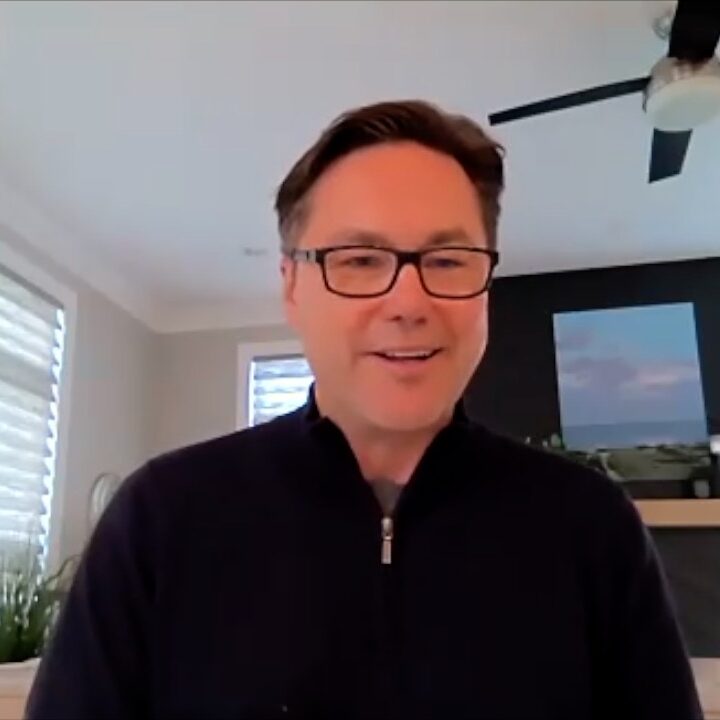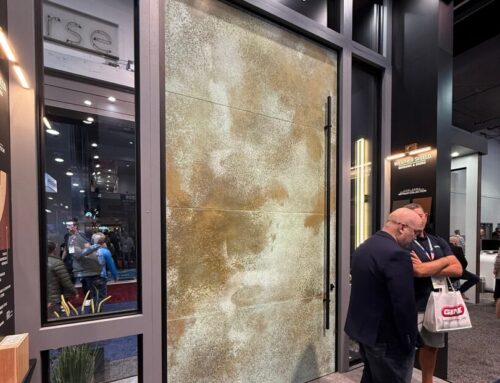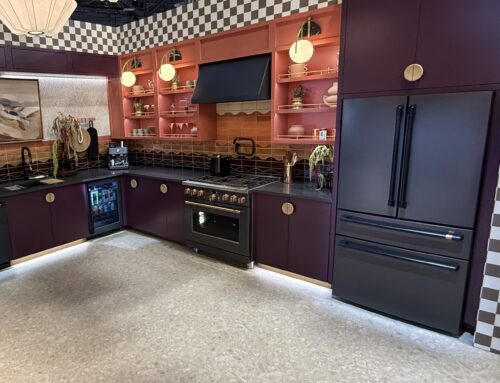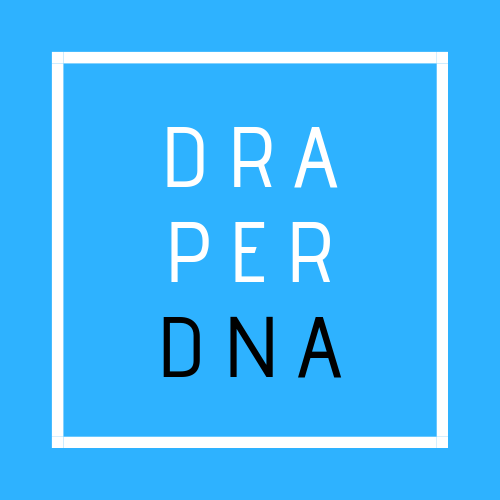There is a Difference featuring John Crosby, President and CEO of WDMA
March 28, 2025
We have known our guest today throughout his career in the home and building industry, and have been continuously impressed with his intelligence, thoughtfulness, and energy. It is our pleasure to share our conversation with our friend and colleague John Crosby.
Hello, John. What is the story of your career?
Hi, my name is John Crosby. I’m the president and CEO of the Window and Door Manufacturers Association (WDMA).
My career has run the gamut in terms of disciplines and also industries served. I am by definition an association management professional, which means grown up in understanding how nonprofit organizations function, deliver value to members, and ultimately grow in terms of opportunities for delivering that value, revenue, growth, all those things. But I’ve also been a bit of a dissident in the association world, which is why I’ve exiled myself a few times into the corporate world. I operate under the philosophy that nonprofit is a tax status. It is not a way of life, and we all need to, in our organizations, in our careers, operate with some level of profitability. Otherwise, what’s the point?
So that’s the core foundation of who I am. My career began in actually politics and the legislative process, and I worked on Capitol Hill. I became a lobbyist, and that’s when I started working for associations leading public policy and advocacy programs. I realized after a few years that I was a better communicator than practitioner when it came to lobbying. Lobbying is sales. It’s no different from a building product manufacturer going into an architect’s office and trying to gain spec preference. You’re doing the same selling when you go into a legislative office, but I’m better at the communication side of things, the messaging, the positioning, the letter writing, the briefing stuff for groups of members and associations.
That pivot that I took, gosh, now about 20 years ago, set me on a course to go from communications to marketing to business development to now into executive management for associations. But along the way, I had the good fortune of getting into the construction and design world through Hanley Wood Media, and it really did alter the trajectory of my career and having a passion for understanding the complexities of this ecosystem and understanding that complexity is a great thing to understand. Truly, I think a lot of people seek to simplify that complexity, which is oftentimes hard. So, it led me to a point where I’m back in associations and I feel like that is my comfort zone, but I am always finding new ways to challenge my thinking in order to continue evolving.
Can you please share an example or two of how your experience makes a difference in your work?
My career experience has been shaped in a way that I like to call it a very Jeffersonian evolution. We all know Thomas Jefferson was a man with many talents. He was an architect, he was a farmer, he was a statesman. I don’t purport to reflect anything that Jefferson did or could do, but I also believe during my career that a career well-spent is one examining and exploring where talents go. I never went into my career thinking, this is what I’m going to do and I’m going to be this way my entire career. But I also didn’t deliberately go the other route.
I found interests and I pursued them, and I found ways to convince others to give me opportunities to pursue those interests. I think that probably some people would say, “Well, that might’ve stalled your career at certain points in time.” My answer is, I don’t regret that one bit because the learning process has allowed me to remain flexible of mind and to identify new opportunities for growth, both for me and for the organizations I represent. In my current role, I will say the last 15 years have led me to this point. I had the good fortune of working for Frank Anton at Hanley Wood Media for five years. I always say I got a master’s degree at that organization, which very much a center of excellence at the time in terms of producing great content for the construction industry, but also an amazingly effective sales organization.
So, the intersection of the two, being able to produce great content and sell really effectively into the building products industry was something that I had never seen before. It was enlightening, and coupled with my exposure to the architectural world with a partnership we had with the American Institute of Architects, I was able to step in and provide support and knowledge and experience from the world of association management that was lacking within that company. That evolved into an opportunity to go to AIA and actually lead their corporate partner program. It truly changed my career at that moment because I took on what really was a turnaround situation. It needed a complete overhaul. It needed a revitalization.
We also just needed to find a way to tap into the broader building products market. I was able to do that in concert with people on the staff, but also some of the exhibitors at the AIA show. It began a program that went from a half million dollar backwater fledgling operation into a $6 million operation after eight years at AIA. So, I learned a lot along the way, but one thing that held constant through it all, manufacturers and architects want to work together. They want that relationship, but it’s difficult sometimes because the nuances of relationship between a sales organization and a design professional don’t always match up. Coming to WDMA, people have said to me, that job was made for me. I’ll push back on that every day.
I feel humble enough that I’ve been given the opportunity. I will say this, I can see things about the value of this industry that matter to everything I’ve done in my career, number one. It is one of the few product categories in construction that sits at the intersection of the art and science of building design. Windows and doors and skylights affect overall energy performance, sustainability performance, but also change the aesthetic value for the homeowner or building occupant and change how we experience the external environment. I think there’s health implications there. There’s all kinds of psychological implications. So, there’s a lot there that energizes me about wanting to support this industry in that way.
What are you seeing in the window of 2025?
2025 is already presenting a range of challenges in particular, but certainly there are green shoots of opportunities sitting amongst all of it. I’ll start with the fact that the current policy environment in Washington in particular is proving to be incredibly chaotic and disruptive. I say this without judgment on political parties. It is just simply outside of the realm of what has been typical practice for regulatory development, legislative development.
So, with decisions being made almost every day, not all affecting our industry, but in some cases being made without public input opportunity, without comment periods, and honestly, in situations where there are no relationships to assert in order to shape policy, organizations like WDMA are left to look at tariffs in particular and say, “Our position is X. Is anyone listening?” If they are listening, hopefully they’ll let us know that they’re taking it into account. It creates a fair amount of discomfort for our members because they look to WDMA to represent their interests on things like tariffs. That’s just one example. We’re doing our flat level best to keep our head above water and ensure that we know what’s going on, we’re stating our case.
My charge to my team is maintain consistency and continuity. Our message never changes about how the industry is affected by a policy. Outside of policymaking, I will say my observation about where the industry sits right now is there’s an open field of opportunity for all the companies in the industry to actually reassess their place in construction. My personal view, and I’ve shared this with people in home building, in the commercial market, and within our own industry, is that our products are over commoditized, especially when it comes to residential construction. I say over commoditized.
There’s a certain level of commoditization that’s just going to happen because production builders, they’re going to buy on volume, they’re going to make decisions that have everything to do with margin, and that’s understood. Having said that, the importance of the windows and doors in a home are ignored by the consumer typically when making a purchasing decision. I don’t think that’s because they want to. It’s simply that in the purchasing process or the consideration process, no one’s talking about, “Do you want good, better, or best thermal performance on your windows, or are you looking for a casement window versus just a double hung window? What kind of quality visual experience do you want from inside of your home?”
When those questions aren’t asked, you’re talking about a percentage of the building envelope that matters more to the consumer than the insulation and the siding and the framing and all that stuff. I think it’s a missed opportunity for helping the average homeowner care about their home. So, I’m trying to find ways to open the conversation with our members so that it becomes more comfortable, and we can start to, as an industry, make statements to our key stakeholders, architects, builders, remodelers, but maybe reasserting or reclaiming that territory and saying it matters and it doesn’t have to affect margin. It’s simply about giving power to the consumer to make some choices that will enhance the value of their home.
What are some of your top priorities in 2025 for WDMA?
Well, our number one strength is our advocacy service to the industry. We have for 10 to 15 years leader in representing the industry with policy makers at the federal and state levels. My intention for 2025 is to not just maintain continuity, but to make it better than it is. You can imagine, especially with state policy, you have 50 state governments and they’re a kaleidoscope of perspectives on building design and construction, sustainability, energy efficiency, health impacts from buildings on humans and the environment. So, advocacy has to be top of the list for us in terms of making sure it’s not just strong but gets better and better and we’re more strategic about it.
We’ve been primarily a defensive minded policy advocacy organization, and my goal is to move us through the year into becoming more offensive minded, finding states where we can actually shape policy as opposed to defend ourselves against it, helping to educate legislators and regulators in states that more progressive minded on policy making. So, they understand the technical nature of our products, which can oftentimes avoid some challenges that we’ve encountered with states trying to implement very assertive policy on building enclosure performance. So, advocacy, number one. Communications excellence is a priority for me. We do a good job of communicating with our members, but I’m a communicator.
So, I want communications excellence, which means not only are we sharing information, we’re providing context with that information, we’re repeating it so that they get the message over and over again. We’re providing it in different formats so that different people learn different ways. You know this. So, we’re doing more town hall formats and webinars and helping to lower the barriers to understanding what AI is doing for members, which helps to increase engagement. The third priority for me is innovation. There’s so much that this organization could be doing for its members, and we have to find ways to get creative to generate new value. I can’t rest on laurels with advocacy because not all member companies find immediate value in that.
So, we’ve got to continue to look at what service we are providing and then determining if it’s in a place where it’s still poised for growth or does it need recalibrating and then what kinds of new programs and services should we be exploring. Then the last thing is partnerships. From an advocacy standpoint, we are a small but mighty organization. People outside of our space call us… We say we punch above our weight, and that is very true. I’m proud of that even after four months, but we can’t accomplish all of our goals without the support or the participation or collaboration with organizations like National Association of Home Builders or Associated General Contractors or the AIA.
So, there are lots of partnership opportunities and alliance opportunities that we want to forge. We have existing relationships that we want to magnify. We work with the Fenestration and Glazing Industry Alliance and the Canadian Standards Alliance on fenestration standards. So, I want to make sure that existing and new opportunities for partnership are going to magnify where we don’t have strength in order to serve and support the industry.
What is a piece of advice you can share with us?
I want to be strategic in providing advice to your audience on what I see out there in the marketplace and what they can or should think about or embrace with respect to growing their brand, growing their business, having the right relationships. I think it starts with given that in construction there typically is no one decision-maker, it’s like most business-to-business sales and marketing. It’s usually a collaborative group decision-making effort, or there’s a sequence of decisions that are made before a product is specified. I start by always telling any company in the building product space that if you don’t think you’re in the digital content business, you are behind. Companies in this space, it doesn’t matter.
The category are subject matter experts in ways that builders and architects and remodelers and even downstream to consumers don’t have the time, the inclination, or the expertise to understand all of it. So, being a great curator of information and knowledge about your products shows you are a master of your domain, and that’s a difficult thing for people who are really good at making stuff and not necessarily talking about their stuff. So, bridging that is essential. The other piece of advice I would give is if you don’t have an R&D program, you need one. If you have one, it should be a part of your marketing to the extent that you can share how you’re growing your products and evolving them and developing for the future.
Architects in particular geek out on those kinds of things, knowing where a brand is going to take its value proposition next, because it ensures that if we’re going to rely on brand, we’re relying on brands that we know are going to be evolutionary and anticipate needs down the road. The last piece of advice I would give is to resist over commoditization of your products. If you sense it’s coming and the sales teams should know this better than anyone else is, if you sense it coming, it’s time to find a way to either assert yourself from a product value standpoint or it’s time to start innovating and finding the next generation of your product line.
Thank you. John.
There is so much we can learn when we take a few minutes to sit down with friends and colleagues to share a good conversation. We are thankful for the opportunity to do this with many different incredible people we have the pleasure to knowing and getting to know. We encourage you to enjoy and share any of the many episodes we have shared with you. We further invite you to introduce the There is a Difference video and blog series to your friends and associates.





